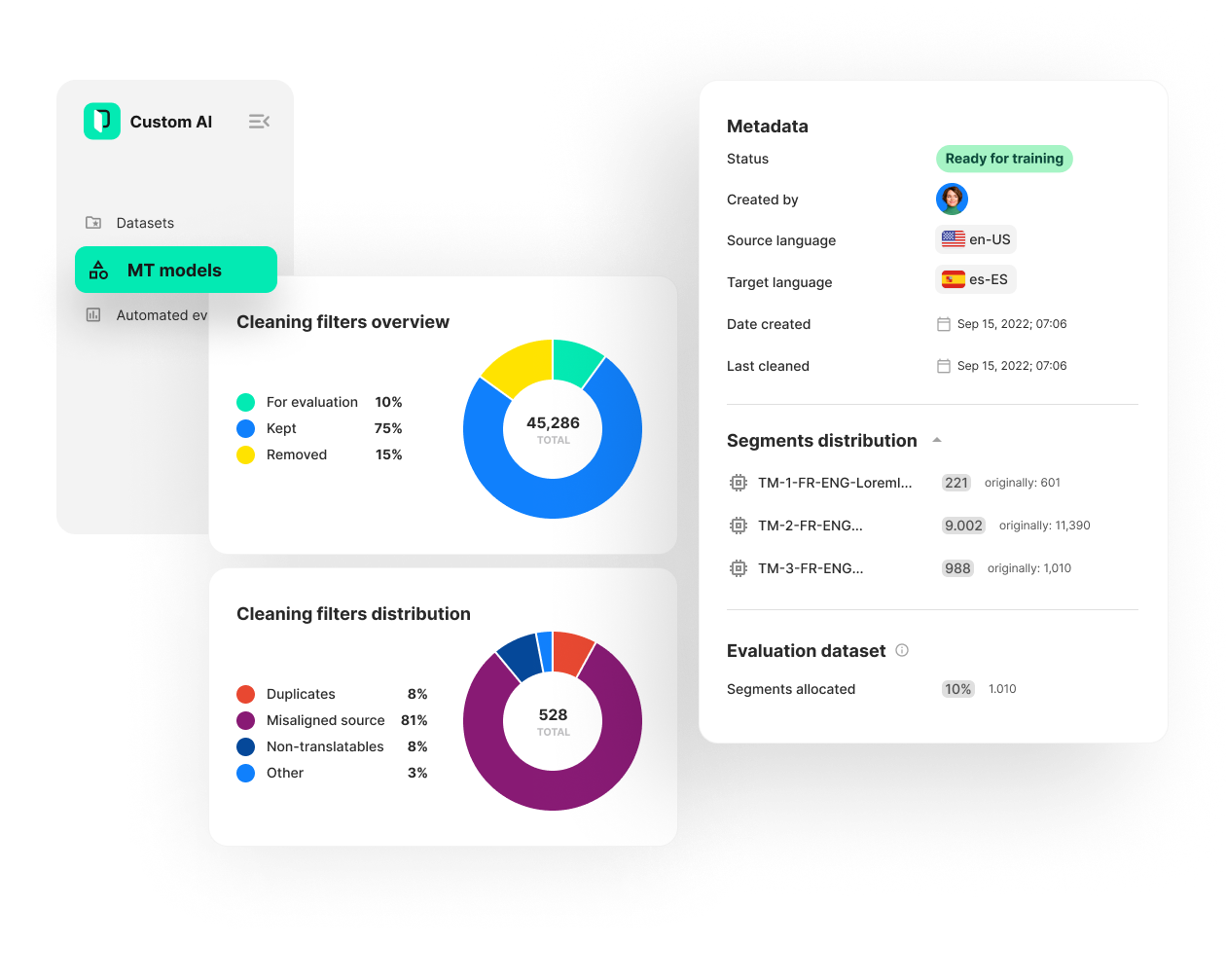Machine translation
Leverage the power of machine translation for accurate, fast, and
reliable translations to stay ahead of your global competition.
The Power of Phrase
Discover advanced MT capabilities across the Phrase Platform. Take control of your machine translation strategy with intelligent engine selection, seamless access to 30+ MT and GenAI engines, and streamlined management features. Deliver faster, more consistent translations without compromising quality.
Phrase Language AI
Create a high-performing MT workflow with fast, reliable translations that don’t compromise on quality. Phrase Language AI uses generative AI to refine output, intelligently selects the best engine from 30+ options, and applies your glossary to ensure consistent, brand-aligned results, with no extra setup required.


Extend high-quality MT to every employee
The new API for Phrase Language AI, allows you to truly scale the value of MT with company-wide access to secure, company-approved machine translation! Seamlessly extend the power and convenience of high-quality, cost effective machine translation to other departments across your organization.
Extensive machine translation engine support
Start translating immediately using our continuously growing list of fully managed engines. No developer time needed! Prefer using a different engine? Add any of the 30+ supported generic and custom engines manually.


Phrase Custom AI
Easily create, tailor, and deploy machine learning (ML) models and customized machine translation engines that are optimized to meet your specific business needs. Unlike generic engines, Phrase Custom AI puts unparalleled translation quality and scale at your fingertips.
Machine translation by the numbers
80%
of MT usage is via fully-managed engines
55%
cost-savings with MTPE compared to HT
64%
of translation jobs involved MT in 2021
“The go-to, end-to-end localization solution that offers—at scale—unprecedented levels of customization, automation, and reporting to help you truly connect with new audiences and drive global growth”
The Total Economic Impact of Using Phrase (TEI) study by Forrester Consulting


FREQUENTLY ASKED QUESTIONS
Here to field your questions on machine translation
What does MTPE and HT mean?
MTPE, or machine translation post-editing, means all segments are pre-translated. Translation memory (TM) matches are applied first, and segments that do not have TM matches are machine-translated. A human linguist then checks all pre-translated segments and makes corrections where needed. Human translation (HT) means the segments are not pre-filled, but linguists have access to TM and MT in a side panel.
What are generic, custom, and customizable engines?
Generic or “general-purpose” MT engines such as Google Translate, Microsoft Translate, and Amazon Translate are not trained on data for a particular domain or topic. Therefore, they’re ideal for general translations.
Custom MT engines are trained on data from specific domains. The result is a more accurate MT output for that kind of content, e.g. legal, or medial.
Customizable engines are trained with one customer’s translation memory data. This is the highest level of customization as the MT engine learns from human translations that were previously done for this specific customer with their tone of voice and terminology.
What is the Difference Between AI and Machine Translation?
Artificial Intelligence (AI) is a broad field that enables machines to mimic human intelligence through learning, reasoning, and problem-solving. It includes machine learning, deep learning, and natural language processing (NLP).
Machine Translation (MT) is a specific AI application that automates language translation. Modern MT, like Neural Machine Translation (NMT), uses AI to improve accuracy by understanding context, grammar, and sentence structure.
How can I improve the quality of machine translation?
To improve MT output, consider the following:
- Use MT Autoselect: Phrase Language AI automatically selects the most suitable engine for each translation.
- Pre and post-editing: Ensure the source text is clear and structured, and use human reviewers to refine translations.
- Use Custom AI Models: Train Phrase NextMT with your own data to improve translation quality.
- Enable Glossary and Translation Memory (TM): Ensure terminology consistency by integrating term bases and TMs.





















